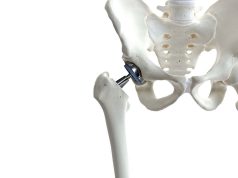Large variation across hospitals for patients rescued from peri-op complications after four procedures
FRIDAY, Oct. 7, 2016 (HealthDay News) — For patients undergoing four selected inpatient operations, there is considerable variation across hospitals in Medicare payments for those rescued from perioperative complications, according to a study published online Oct. 5 in JAMA Surgery.
Jason C. Pradarelli, M.D., from Brigham and Women’s Hospital in Boston, and colleagues conducted a retrospective cohort study using claims data to assess differences across hospitals in the costs of care for patients surviving perioperative complications after major inpatient surgery. Data were included for Medicare patients aged 65 to 100 years who underwent abdominal aortic aneurysm repair (69,207 patients), colectomy for cancer (107,647 patients), pulmonary resection (91,758 patients), and total hip replacement (307,399 patients).
The researchers found that for all four operations, patients who were rescued had higher price-standardized Medicare payments than those who died. Payments for patients who were rescued were two- to three-fold higher at the highest-cost-of-rescue hospitals than at the lowest cost-of-rescue hospitals for all four operations. Highest-cost-of-rescue hospitals had higher risk-adjusted rates of serious complications than lowest-cost-of-rescue hospitals, with similar rates of failure to rescue and overall 30-day mortality.
“These findings highlight the potential for hospitals to target efficient treatment of perioperative complications in cost-reduction efforts,” the authors write.
One author disclosed financial ties to ArborMetrix, and two disclosed ties to the BlueCross BlueShield of Michigan Foundation.
Copyright © 2016 HealthDay. All rights reserved.








